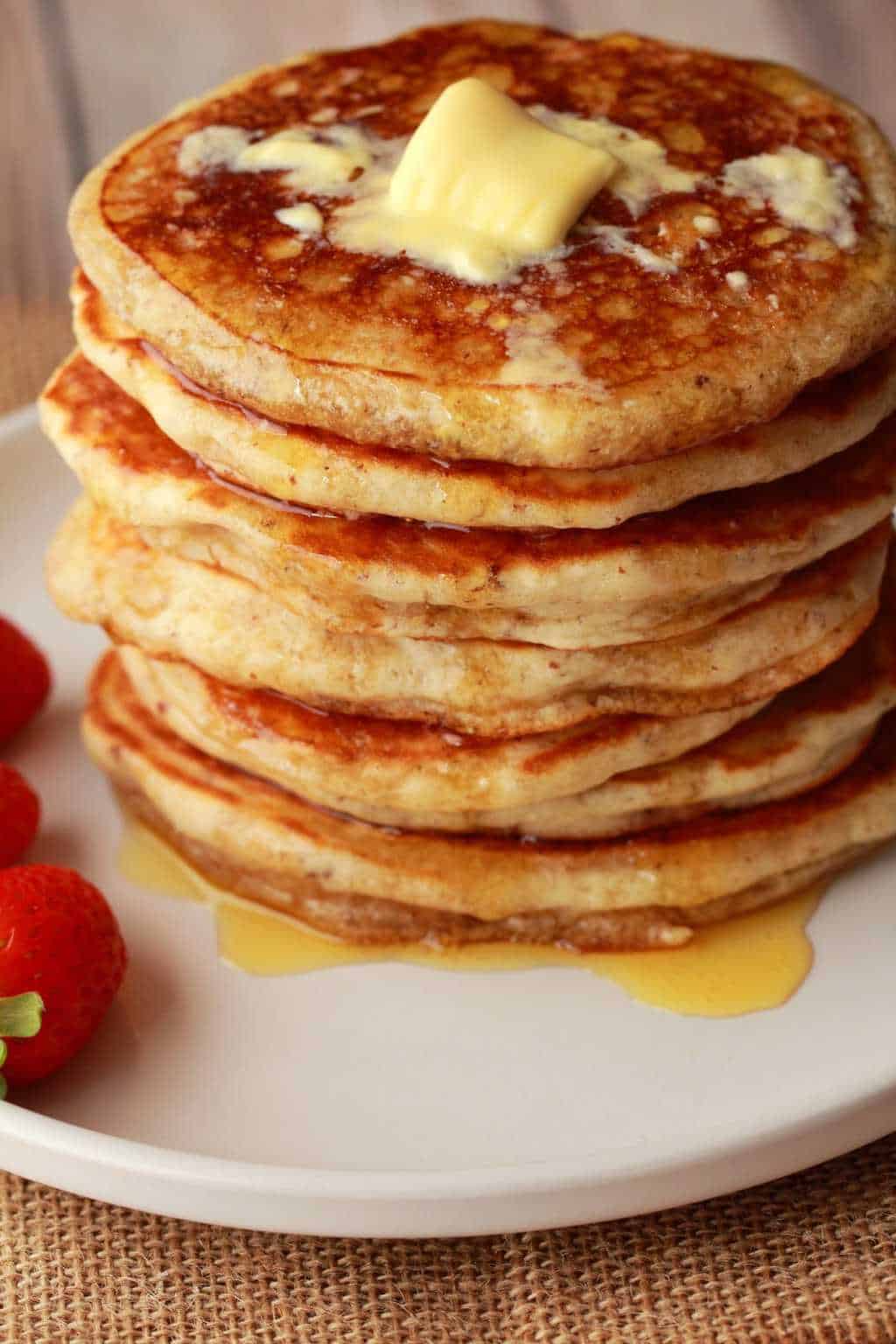I see the diagram: the first knife is for cutting bread. The second is for cutting fillets. The third is for cutting… chefs?
If you want a cheap cutting board because you can’t afford end grain, look into hinoki boards. They’re cheap and very soft wood.
As with all wooden boards, make sure you seal it first with a neutral oil such as mineral oil.
There are but two necessary knives. A chef’s knife and a paring knife. Sharpened appropriately. Usually not even a paring knife but sometimes the small size is beneficial.
I use a couple of damp paper towels under the chopping board to hold it still, then when I’m done I use the damp paper towels to wipe the knife, board, and bench
Edit: for vegetables only. Not with meat jfc
Have you never heard of cross-contamination? Using the same towel that touched the counter to wipe the knife and cutting board as well is disgusting as fuck.
For your sake (and the sake of any guests you have over), I hope you’re talking about a workshop knife, not the kitchen. I hope you never get a restaurant job, either.
EDIT: Jesus Fucking Christ people, take a food safety course. Yeah I am brash and a bit of a dick but I’m not wrong.
No, you are wrong. Countertops can be cleaned just as well as your kitchen utensils can. People make dough on them all the time.
Not with meat, or course. When chopping vegetables.
“Pick the right blade.” Santoku. The answer is Santoku.
I’m a bunka kind of fella.
Nah chef’s knives are better, more versatile.
I don’t like the curved point of mine, I think I’ll go for a chef knife instead
This chart is missing a knife that I have. The blade hooks forward instead of backwards, like a bird’s beak.
Since it’s small and the tip extra pointy, I use it for precision cutting. I’ve also found it useful for thin slides of cheese, since the blade is also not as thick as the other knives in my set. Still, I’m wondering what its actual purpose is for.
Santoku knife. I was just about to comment the same thing.
I have that one too but that’s not the knife I’m talking about. It’s about the size of a paring knife and it hooks forward. Almost like a scythe but not nearly as dramatic of* a curve.
(When I get home from work I can upload a picture if anyone cares to help out.)
Turning Knife?
I’m pretty sure it’s just called a bird’s beak paring knife.
Reading further about it, it’s intended for tasks while holding the object you are cutting, rather than using a cutting board. Like peeling an apple in your hand.
Ah okay that makes sense. I prefer a peeler, but I can see purists preferring such a knife. Thanks for the info.
Peeling knife? There’s also hook knife, but that can be a variety of things. Cheese knife hooks backwards and has two points.
A chefs knife will do for everything. Keep it sharp enough and it’ll even slice bread. As for the onion horizontal cuts are unnecessary. Offset radial cuts are fine (as you move away from the centre vertical cut you angle it more).

What’s the x axis on those graphs? I can’t zoom in enough on this picture to read it. I did look it up, but I only found versions with the exact same resolution
It’s not your fault; even if you could zoom in, there’s not enough resolution to make out any details.
Your Lemmy app is probably preventing you from zooming images beyond a 1:1 pixel ratio, preventing you from zooming them past their native resolution. Voyager doesn’t have that issue, if you were considering a different app.
I’m on voyager, lol, but that’s good to know. I can zoom in further, but there’s no point, it doesn’t get clearer.
I have absolutely no idea. I grabbed the first illustration that showed what I described (poorly).
As a chef, the only inaccuracy I see here is that bamboo cutting boards are good for knives. They are a great, cheap, sustainable option, but the silica content makes bamboo incredibly hard, and it will dull your blades faster than wood or plastic cutting boards.
Bamboo cutting boards suck because you can’t put then in the dishwasher. They break apart from the heat, which also means that you can’t get the water hot enough to sanitize (140°F+), so hand washing is a non-option either without burning yourself.
What about using the bread knife for meat?
Edit: also what’s “produce”?
American for fruit and veg.
Thanks!
“Produce” is presumably fruit and vegetables, although that’s a pretty broad category to lump together given that so many vegetables behave differently. Consider a tomato versus lettuce or a yam, for instance.
I never understood why people use serrated knives for bread, it gets crumbs everywhere. I use a sharp chef knife instead and it’s much cleaner. I use it for 95% of stuff, there’s no much need for any other.
That killer knife blade sliding haphasardly over a shining crust in the morning I guess 😁
If you’re cutting soft soft bread, then a plain blade is fine, but if it’s a crusty bread like a sourdough, the serrated blade is much better at cutting the crust without crushing the soft interior (IME, not a chef)
I don’t see this suggesting a bread knife for meat, but a dull serrated blade beats a worn plain edge for any purpose. And produce is anything grown like fruit and veg.
It’s got produce, bread, and meat highlighted for the bread knife.
The only thing I’ve ever used a bread knife for is bread.
Ah I didn’t see that little spiral graph. I agree with you for anyone who keeps their knives sharp. But if you’re trying to cut thin slices off a roast and have to choose between a bread knife and a dull chef’s knife, I’d likely go for the bread knife. That said, I don’t know they intended it that way, and it totally could have just been an error.
The infographic only states that a bread knife is good for bread. It is correct in this regard.
Produce is the general term for fruits and vegetables and things of the like.
The bread knife has markers in the produce, bread, and meat sections
The chopping technique is not really that necessary. It’s great for chopping lots of veggies at speed, but if you’re just cutting veggies for a single meal then there’s not that much benefit unless you’re already highly practiced and that’s your default.
What’s far more important is just being cognizant for each cut you make. Walk don’t run.
The chopping technique is about eliminating risk, mostly. Sure for a single meal and being aware you’ll be fine. But getting into the habit of a good technique means you’ll be fine even when you’re tired or distracted
If you want to spend the time and effort to practice that technique, go for it. But the benefits don’t really make it worth it for most people.
into the habit of a good technique means you’ll be fine even when you’re tired or distracted
The technique described in the image is not the only “good technique”. A person could reasonably develop their own “good technique” simply by being cognizant of their cutting.
I will add another bullet point to the list above, specifically regarding cutting boards. Poly cutting boards are also acceptable and primarily what I use. However, if I see you using a glass cutting board or a plate as a cutting board, or chopping directly on your granite countertop, I am afraid I am going to have to hurt you.
I am, as you can imagine, the default knife sharpener within the circle of my family and friends. However for quite some years I would not sharpen any knives for my sister anymore because she refused stop using her stupid 1980s glass cutting boards. (I believe they were probably actually intended to be serving trays, but good luck making people understand that.) She kept complaining that my sharpening was “no good” because her knives dulled so quickly.
I was eventually able to coordinate with my brother in law who was also sick of it, and we located all of the glass boardlike objects in the house and surreptitiously threw them away.
Doing the lord’s work here.
The chopping/grip advice is missing a critical component: your two farthest forward knuckles on your non-knife hand should be contacting the knife blade at all times. This gives you precise control and you know exactly where the cutting surface is. It takes a lot of practice to do properly, but that is how the pros do it. I recommend this video from Jacques Pepin for an example: https://youtu.be/nffGuGwCE3E
Chinese chef knife is missing. It’s not a meat cleaver, the blade isn’t nearly thick enough for it, but it does make quick work of veg. It’s also one of the only knives used for Chinese cooking. Learned about it from Martin Yan.
For an onion, I’ve never diced it by making the cuts indicated by number 1, figuring the layers essentially do that for you. Am I doing it wrong?
No, people do it both ways and you’ll even find both techniques by the pros. But anybody claiming it makes them more even I really don’t think is thinking it through. By adding the extra cut across those natural layers, you’re actually making to very small bits when the crosscut is near the layer boundary.
That’s why I think it is not only easier but superior not to add the crosscut.
—-
Not wrong per se, but you’ll end up with more inconsistently sized pieces if you don’t do those initial cuts in my experience
I use a bred knife to slice cheese off a block every day. Line it up and push down, one hand on handel the other on the spine at the top. It works better than any other knife to slice cheese blocks.
This post makes it sounds like I am committing a war crime.
Of course this is done in idiocy imperial. Fuck your 'Murican “we need to be special so we use this objectively shitty thing to be different”. Only 3% of the world has a use for this, while the rest 97% are fucking tired of having to do extra work to convert.
What the fuck are you on about? What do you need to convert in this?
I guess things like dicing = 1/4" cubes







